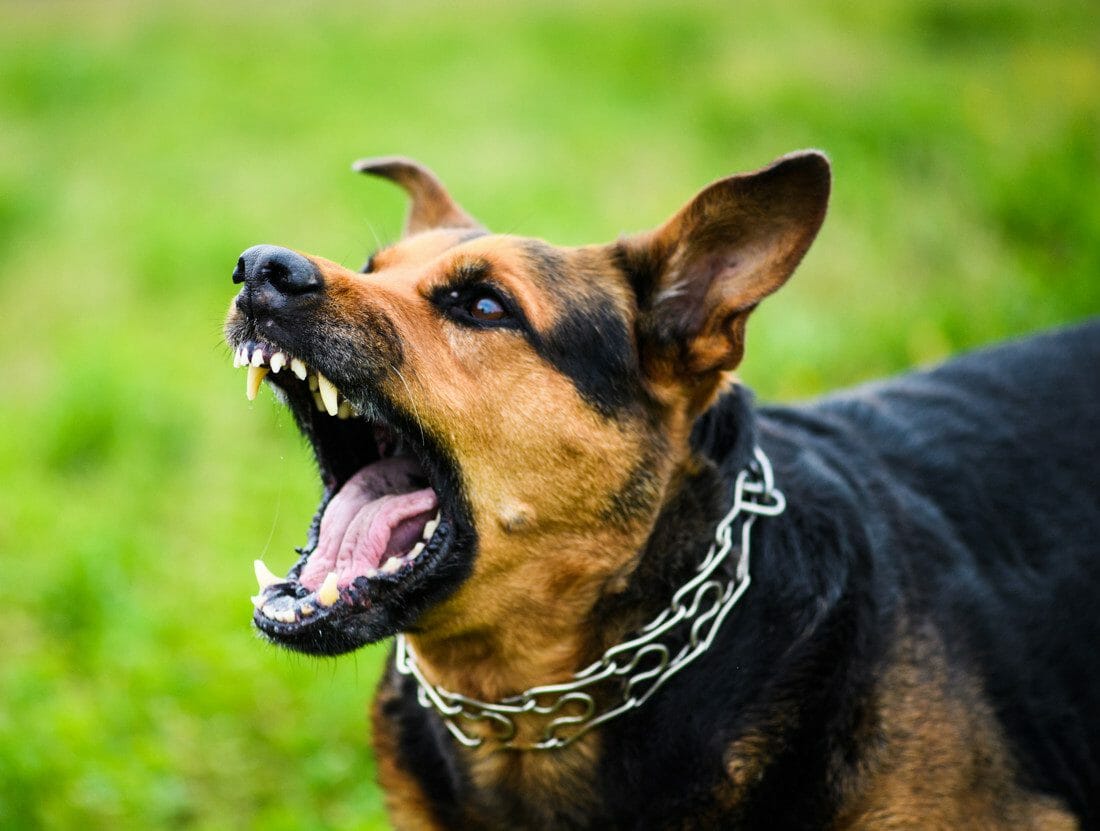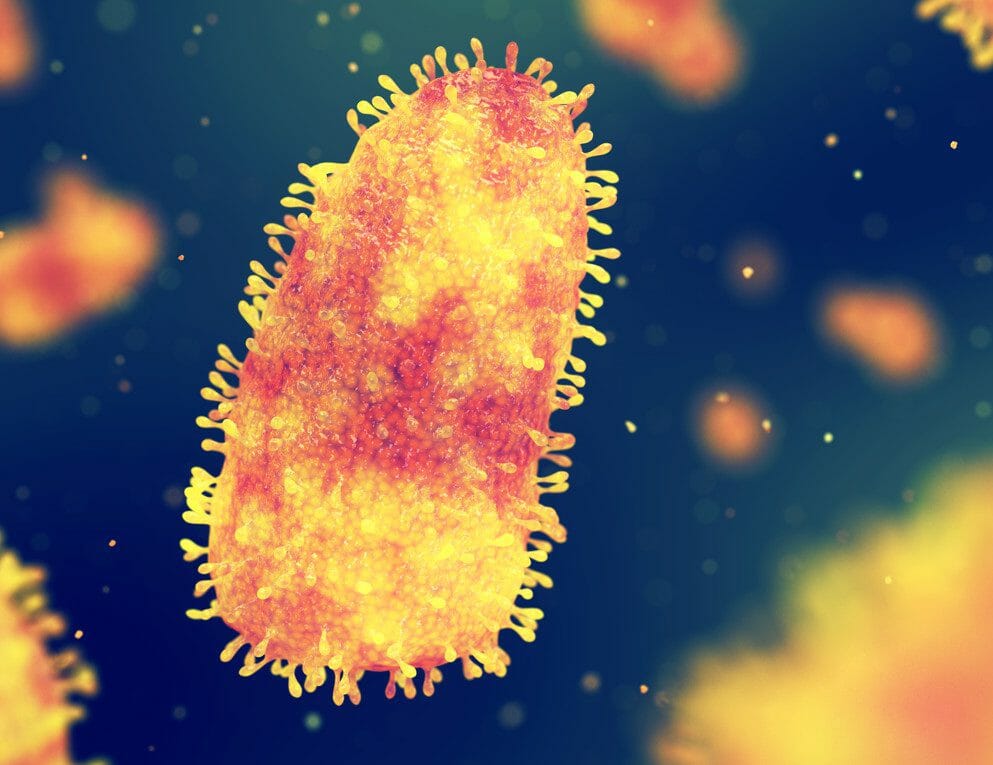Rabies Symptoms in Dogs
One of the most dreaded viruses in the canine world is a rabies infection. When a dog is bitten by a rabid animal and the virus begins to infiltrate the body, it is more often than not a fatal prognosis. Once the virus is transmitted to the dog, a brief period occurs where it takes hold of the body. Following the incubation (prodromal) period, which may last 1 to 3 days, the infected canine usually takes a drastic turn for the worse.
The canine may go on to endure either a furious period or a paralytic period of rabies. A furious period entails dramatic fluctuations in behavior, including acts of aggressiveness, hostility, or even docility. By contrast, a paralytic period is marked by extreme lameness, lack of normal coordination, and paralysis of the body. In some cases, the canine may not showcase any overt symptoms whatsoever before succumbing to the virus.

Signs of Rabies
Although some canines do not show any symptoms whatsoever, the most common symptoms that may accompany a rabies infection are:
- Fever
- Fear of water
- Chewing, licking, or picking at the bite wound
- Extreme fluctuations in behavior
- Difficulty swallowing
- Abnormal barking
- Seizures
- Lack of coordination
- Hanging jaw
Sadly, once these types of symptoms are being observed, the survival rate is less than 1%. For this reason, it is absolutely essential to the dog’s survival to notify a vet if the infection is suspected at all. One of the only ways to potentially save an infected dog is to seek treatment before any symptoms are seen.

What Is Rabies?
Rabies is a vicious viral infection that may affect not only canines by felines and humans as well. A rabies infection targets the central nervous system (CNS) and parts of the brain consisting of gray matter. This virus is present in every part of the world except Hawaii, Australia, Antarctica, and some other notable countries. Therefore, it is very prevalent, with millions of dogs dying from the infection yearly. Sadly, in nearly every case of this viral infection in dogs, it is lethal unless treated immediately after the bite takes place. Even then, survival is uncommon.
Can Humans Get Rabies from a Bite?
Humans are able to contract this virus from canines. Because of this, it is crucial that medical treatment is sought immediately if a human is bitten by a wild animal and the rabies virus is suspected.
How Do Dogs Get Rabies?
Dogs contract rabies when the virus is transferred from one animal or human to another through saliva or blood that is infected. Usually, a deep bite from a rabid animal is all it takes to transfer the infection. A scratch or open wound may also foster the disease.
How Is Rabies Transmitted?
Although it is normal for an infected dog to transmit the virus to another dog, the virus is more often than not spread by means of bites or scratches from raccoons, foxes, coyotes, or skunks. Wild animals of any kind are the most common carriers of rabies.

How Long After Transmission Do the Symptoms Begin?
After the bite takes place, an incubation period will follow. Although it is normally only a few days, some incubation periods may range from a few weeks to a few months. The length of incubation depends almost entirely on how much of the virus was communicated in the bite, how severe it was, and where the bite itself is on the dog. All of these factors directly influence the onset, longevity, and potency of the virus in the canine’s body.
Rabies Treatment
Unfortunately, there are no current treatments for this viral disease. The best form of treatment is the consistent use of preventative measures. The most important and effective preventative is the rabies vaccine, which is required by most states in the contiguous U.S.
The only possible treatment that may be effective can only be used in a very small window of time before the symptoms show up. Because the symptoms are often the first indication owners even know something is wrong with the canine, it is normally too late for an intervention.
How Often Do Dogs Need Rabies Shots?
According to the laws of most U.S. states, canines must receive a shot for rabies on a set vaccine schedule throughout their life. Usually, after the initial vaccine is administered shortly after birth, a canine will need to be re-vaccinated every 1 to 3 years for the rest of its life. Luckily, many animal shelters offer these required rabies vaccines free of charge or at an affordable rate.
The dog’s vet is the best source of information regarding what vaccines are needed and how often it should be taken in order to comply with the specific state’s laws. Furthermore, most states mandate that all dogs and cats must wear a dog rabies tags to show others that the animal is up-to-date on vaccinations. Although it may seem like a hassle to get this vaccine at the frequency that is required by law, it is all done to protect the animal from a virus that is both transmittable and lethal.

Can Dogs Survive After Contracting Rabies?
In almost every case of a rabies infection, the infected animal succumbs to the virus. As mentioned previously, once a canine becomes symptomatic, the virus has already progressed to the point of no return. However, there are some cases (albeit inadequately documented) where a canine has lived. These cases are few and far between.
The only common theme in these survival cases is that the amount of the virus transferred to the dog was very minimal. So, while survival is extremely unlikely, there is a small possibility of it if either too little of the virus was transferred or the infection was immediately counteracted with anti-rabies medication administered by a vet.
What Are the Best Tips to Avoid Rabies?
Adhering to the vaccination timetables put forth by the state one resides in is the best advice a canine owner can abide by. These vaccines are effective and will work wonders at keeping a canine protected. In addition, dogs should be given other core vaccines, such as the vaccine for parvo. Besides this, these are some of the best tips to avoid this vicious disease:
- Keep pets away from wild animals, dead or alive, at all times. This virus may still be viable in a recently dead animal.
- Try to feed pets inside only. Leaving food outdoors may attract diseased wildlife.
- Ensure that no wild animals have access to the house, detached buildings, or trash cans.
- If a wild animal is frequently seen around the yard, contact animal control.
Although these steps may seem frivolous to some, each step helps to prevent this life-threatening virus from being contracted by a beloved member of the family, animal or human.



